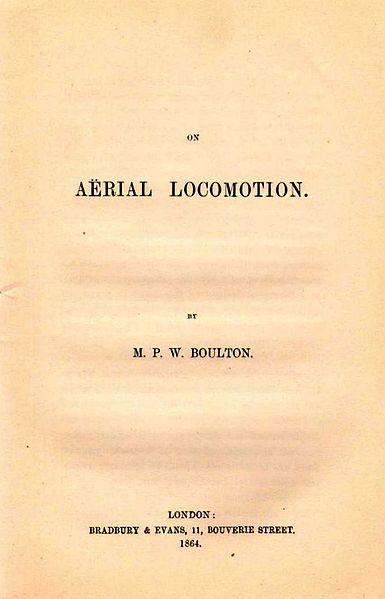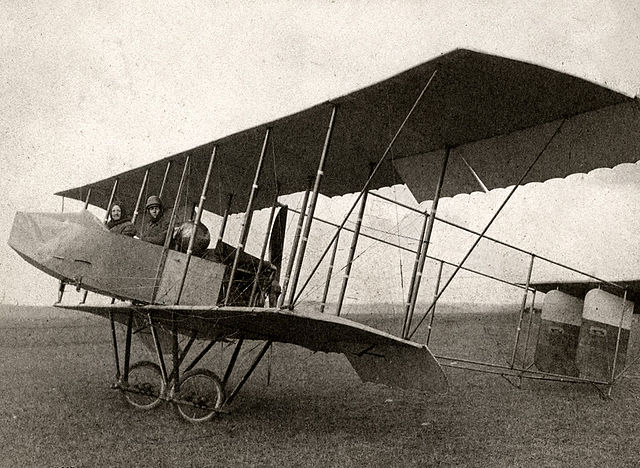An aileron is a hinged flight control surface usually forming part of the trailing edge of each wing of a fixed-wing aircraft. Ailerons are used in pairs to control the aircraft in roll, which normally results in a change in flight path due to the tilting of the lift vector. Movement around this axis is called 'rolling' or 'banking'.
An aileron and roll trim tab of a light aircraft
Boulton's 1864 paper, "On Aërial Locomotion" describing several designs including ailerons
A 1912 Farman HF.20 biplane with single acting ailerons hinged from the rear spar. The ailerons hang down when at rest and are pushed up into position when flying by the force of the air, being pulled down by cable to provide control.
A Yak-52 using ailerons to roll counter-clockwise during an aerobatic maneuver
Aircraft flight control surfaces are aerodynamic devices allowing a pilot to adjust and control the aircraft's flight attitude.
KLM Fokker 70, showing position of flap and liftdumper flight controls. The liftdumpers are the lifted cream-coloured panels on the wing upper surface (in this picture there are five on the right wing). The flaps are the large drooped surfaces on the trailing edge of the wing.
Wing trailing edge flight control surfaces of a Boeing 747-8. Top left: All surfaces at neutral position; Top middle: Right aileron is lowered; Top right: spoilers raised during flight; Middle row: Fowler flaps extended (left), extended more (middle), hinged with inboard slotted part hinged even more (right); Bottom row: spoilers raised during landing
Air brakes on the rear fuselage of a Eurowings BAe 146-300
Mass balance protruding from an aileron used to suppress flutter








